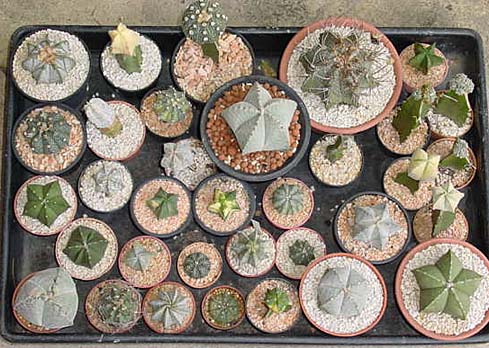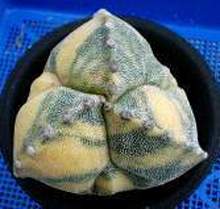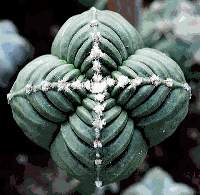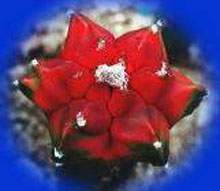ABNORMAL FORMS OF ASTROPHYTUM, OR QUESTIONS WITHOUT ANSWERS
Nikolay Shemorakov, Kaluga region, Russia
HYBRID ASTROPHYTUM
Probably all of you know hybrids of Astrophytum as they are extensively hybridized in Russia and in other countries. That is why seeds of Astrophytum hybrids are widely available for cactophiles. Many generations of hybrids were created inside the genus, features of natural species mixed, and interesting hybrids and selective cultivars appeared (photos 1 - 3).
 |
| Photo 1. |
I can't judge if this is good or bad, it may be just natural, and it's definitely Astrophytum's "guilt", as most of the species are easy to cross, and their seeds have a high germination capacity that lasts for 2 years.
 | 
|
Photo 2.| Photo 3.
| |
Sometimes seedlings of hybrid Astrophytum start dividing dichotomically, or getting red or yellow spots on the stem, or developing crested, monstrous or other abnormal forms that yet have to be named.
DESCRIPTION OF ABNORMALITIES
 |
| Photo 12. |
Multihybrid - a species obtained as a result of multiple interbreedings.
Apex - the top part of the stem consisting of meristem and giving rise to all the tissues of axial organs and determining their length.
Recessive gene - the parent gene that doesn't show its influence in the of the first generation progeny.
Homozygous condition - homogeneity of the genotype for particular genes. In this article: the genes responsible for the number of ribs.
PHOTOGRAPHS
Photos 1 - Kreewut from Thailand,
Photos 2 - 3 are taken from the Japanese site http://www11.freeweb.ne.jp/diary/rampo/ .
The plants on photos 4 - 8 are from N. Shemorakov's collection. The photos are made by the author.
From the Editor.. I don't know neither the authors of these beautiful Astrophytums (photos 9-12), nor their taxonomic names; the only sure thing is that the plants came from Japan. But I would like to learn more. I'm sorry for publishing the photos on our web site without owners' permissions. Thank you very much for this miracle! Altogether I found and downloaded about 60 similar photographs of 'wonder-plants'. I would be glad to receive an article on how these plants were grown or some comments to the photos. I am looking forward to your feedback.





